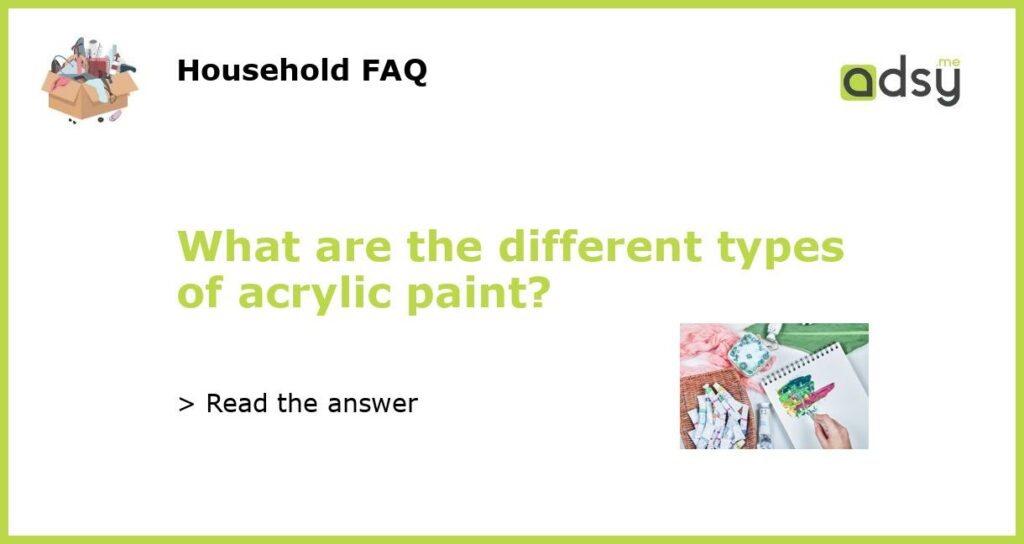Understanding the Various Types of Acrylic Paint
Acrylic paint is one of the most popular types of paints used by artists worldwide due to its versatility, ease of use and fast-drying qualities. If you’re just starting out in acrylic painting, you may not be aware that there are different types of acrylic paint available, and each has its own unique characteristics. In this article, we’ll explore the various types of acrylic paint and their uses.
Acrylic Polymer Emulsion Paints
This type of acrylic paint is the most common, and it contains pigment suspended in an acrylic polymer emulsion. It can be used on a variety of surfaces like canvas, paper, wood, and ceramics. Acrylic polymer emulsion paints are water-soluble, fast-drying, and are available in various opacities. They come in two forms: Heavy Body and Soft Body. Heavy body acrylics are thick and can hold brush strokes while soft body is runny and easy to pour, making them a perfect option for glazing.
Fluid Acrylics
Fluid acrylics are much thinner than regular acrylics and are ideal for creating bold, flowing applications with a consistency akin to watercolor. They’re typically less pigmented than other acrylic paints, making them ideal for layering, and can be used for dipping techniques and airbrushing.
Acrylic Ink
Acrylic ink is similar to fluid acrylics but has a more fluid consistency, similar to watercolor in texture. They come in small dropper bottles, which makes them perfect for making detailed lines and finer washes. These inks can be used on paper, canvas, and other surfaces, and are ideal for calligraphy, brush lettering, and painting fine details like watercolor portraits.
Acrylic Spray Paint
Acrylic spray paint is excellent for covering large surfaces quickly, and it dries faster than other types of acrylic paint. This makes it an ideal option for outdoor murals or art installations. However, it’s challenging to control and can be messy, so it’s best used in situations where the artist needs to create a seamless and even-coating finish.
Open Acrylics
Open acrylics were created to extend the drying time of regular acrylics, which dry quickly, which was seen as advantageous in some situations and challenging in others. Like regular acrylics, open acrylics contain pigment suspended in an acrylic polymer emulsion, but they also have proprietary retarders to slow down the drying process, making them perfect for blending, shading, and other techniques that require more time. They come in both soft body and heavy body forms, and their extended drying time makes them ideal for painting outdoors, workshops and demos or working on larger projects.






